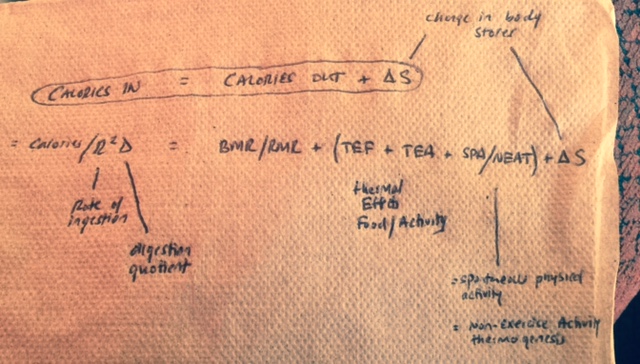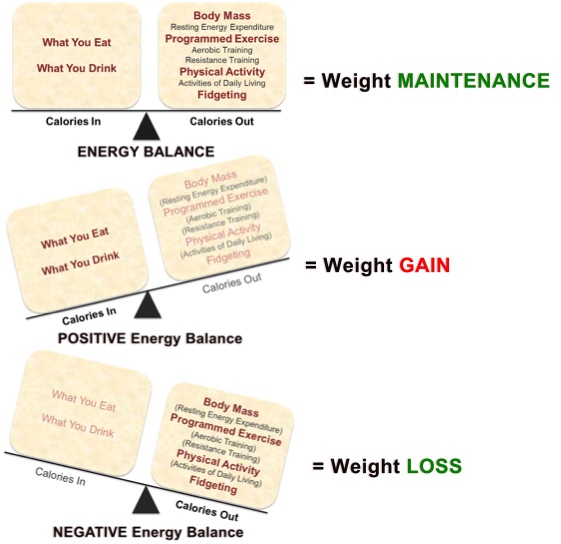
Assuming weight loss isn’t governed by a mystical deity it should be something we can elucidate with a cup of coffee and a napkin. Lets do just this!
Let’s start with a fundamental tenet of nutrition (and thermodynamics!): Calories in = calories out. It’s very true that energy cannot be created nor destroyed, but it can shift form! How about cankles or a muffin top? Our body operates in a steady state and either stores or removes the excess. Now the “intake” side of the equation is fairly straightforward. The calories we take in are the calories we take in. But note the quotient; the “digestibility” of our food dictates what percent of nutrients gets absorbed and what [expensively] adorns poop. R-squared is something I created to sound fancy but I do think it holds truth. The rate of ingestion and the digestibility (think fiber..) determines how cells lining the digestive tract see these nutrients. Grazing on a bag of potato chips throughout the day is more damaging than shoveling down a bag in minutes because the latter overloads our absorptive apparatus! I squared it for effect, and placed it in the denominator to yield a LOWER net caloric intake on the left side of the equation.

The right side of the equation is considerably more complex because calories are burned in multiple ways. Moreover, none of these is static! Many know that basal metabolic rate (BMR) is an intrinsic determinant of how we burn calories. But it’s governed by hormones (cortisol, thyroxine, insulin etc) that are in constant flux in time and space. Food ingested at 10am is processed differently than at 10pm. Similarly, the temperature of food correlates to the rate of enzymatic activity! SPA = calories burned with physical activity; but it’s cleverly weighted against the term NEAT, non-exercise activity thermogenesis, because multiple studies have validated that hard exercise is often accompanied by negative post workout behavioral changes! For some this equates to an extra episode of Property Brothers afterwards; for some this equates to an ice cream to reward all that hard work. The unfortunate ones choose both and effectively cancel out any change in output while increasing input!

This is a fun topic that gets very confusing very quick. We use weight as our primary end point but as we all know muscle weighs more than fat. Does burning 3500 calories per week really equate to a 1 pound weight loss? Where does this come from? And how does water-weight factor into the equation above? Wrestlers, boxers and the Real Housewives of the OC have long exploited the diuretic effect of salt wasting to drive weight down quickly. I’ll touch upon all of these soon.

